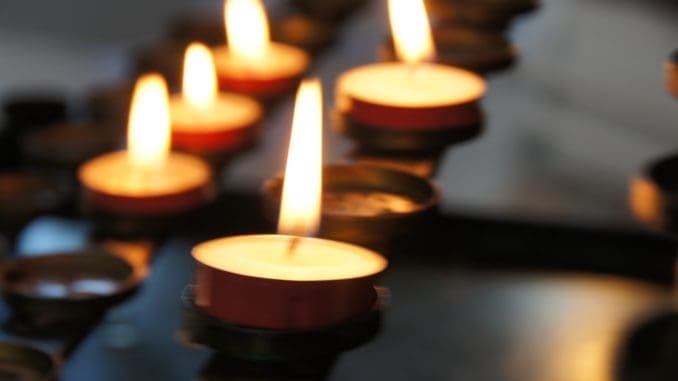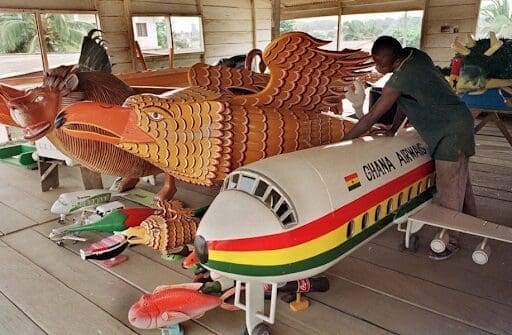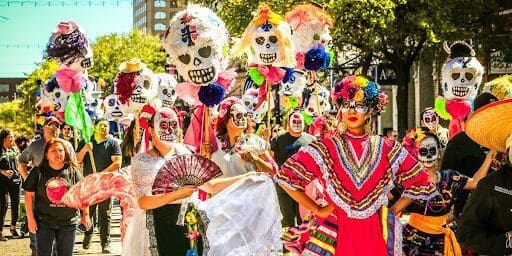
An approach to preserve someone’s memory and legacy is to memorialize them. It’s a chance to celebrate their life and their effect on everyone else. A memorial service or ceremony, a physical monument, or a fund can all be established to commemorate a person’s memory. There are unique ways to memorialize someone. Keeping their memory alive by sharing their hobbies and passions, stories, and images may also be a heartfelt way to celebrate their life. Check here at Forevory to know more.
People worldwide have different beliefs and live unique lives, but one thing that is common is that people everywhere understand that death is inevitable. But even in death, communities have varied traditions and practices. Let us dive into how countries across the world deal with death.
Asia
CHINA-
China encompasses the majority of Northeast Asia. Superstition and customs abound in Chinese funerals, which include the removal of mirrors and hanging a cloth over the threshold of their homes. Failure to observe prescribed rites results in death and misfortune for the bereaved family. The Hungry Ghost Festival takes place in July or August, and it is a time to honor ancestors while also being mindful of ghosts who may cause havoc. Preparing food to feed the spirits and honoring deceased loved ones are examples of the rituals and practices followed.

TIBET-
Tibet is a distant Buddhist territory to the southwest of China. The deceased’s body is left on a platform for vultures to consume in Tibetan sky funerals. The soul of the departed arrives in Paradise after the funeral.
KOREA-
Funerals in Korea are centered on respect for parents and Confucian customs. Cremation beads are kept in the homes of Korean families as a unique way to honor the deceased. The loved one’s ashes are polished and transformed into multicolored beads. These are not worn; they are on display in homes.

JAPAN-
Death is an extremely involved procedure in Japan. Respect is also very crucial. After a person has died, they are cremated at a low temperature to preserve the bones. They are then laid to rest in an ornate grave that their parents had purchased for them when they were born. Death is viewed as a liberation, and acceptance is valued above self-expression. White envelopes laced with black and white ribbons are used to bring condolence money to wakes.
INDIA-
India is a land of many religions. Therefore, the views on death also vary.
Muslims believe in a physical resurrection on the Day of Judgment; hence, they bury their dead rather than cremate them. The dead are buried with their backs to Mecca, with tombs raised above the ground or marked by stones so that no one walks on them. Because the death of a Muslim is seen as a loss to the Muslim community as a whole, funerals are frequently attended by those who do not know the deceased. Crying is normal at funerals, but wailing and yelling are considered unseemly. A funeral is followed by a mourning period lasting up to 40 days.
In Hinduism, dying at home, surrounded by family, is preferred. Hinduism believes in reincarnation, in which a deceased person reappears as another living creature according to their Karma. To liberate the spirit fast, bodies are incinerated quickly, usually within 24 hours. Mourners wear white, not black. People do not bring food to the wake but to a ceremony 13 days after the cremation, where the soul is liberated and the mourning period is considered over. Ashes are strewn over water, with the holy Ganges being the most ideal location.
Sikhs believe in the soul’s transmigration (karma) and that death is an inevitable element of life. They believe that human existence offers the chance to break the soul’s reincarnation cycle and return it to Waheguru, the Sikh term for God. Sikh funerals are called Antam Sanskaar, which means “final rite of passage,” the event’s center is a celebration of the soul reuniting with Waheguru.
Africa
GHANA-
The Ghanaian Ga-Adangbe people are noted for their coffins. They create beautiful coffins that mirror the deceased’s passions. These coffins are pricey, costing around a year’s income. An airplane, a Porsche, a Coca-Cola container, an animal, or even, in questionable taste, a large cigarette packet may be used as the shape for a coffin. Coffin manufacturers are in high demand and are considered prominent artists. Funerals are publicized on large billboards so that no one in the neighborhood is left out.

RWANDA-
The death process in Kirinda, Rwanda, is divided into three stages: ministering to the dying soul, mourning, and the end of mourning. The person’s last rites are performed for them as they lie on their deathbed in the first process. The division of property, the drinking of ceremonial beer, and the anointing of the body are all part of this. Once the person has died, the body is dropped into a grave, along with a young boy who throws handfuls of sand on the body. That boy is given a cow or a goat as a reward and is considered the deceased’s son from then on.
Americas
Catholicism influences some death and dying traditions in several South American countries, with a focus on honoring the deceased person’s life. A wake may be held after the funeral, followed by a Catholic mass. In Latin communities, old religions merge with spiritual traditions to create a distinct perspective on death. Funerals can be vibrant and feel more like a party than a sad occasion. Some communities believe that their loved ones who have passed away can return to life and participate in the Day of the Dead celebrations. Grief is frequently seen as normal and respectful to a loved one who has passed away.

COLUMBIA-
If a child dies in Columbia, it is believed that they will become angels who will go to paradise. Loved ones seek consolation in knowing that their kid is in heaven, therefore the mourning process is frequently brief.
ARGENTINA-
Funerals in Argentina are more expensive than weddings since loved ones are buried immediately away. On the anniversary of their death, a holy liturgy is celebrated for friends and relatives.
PERU-
A viewing, a cemetery service, or a cremation service are all common in Peru. Guests will chew cocoa leaves in some cases, which is considered to let them communicate with their deceased loved one. Some people believe their loved one is in a deep sleep, while others believe they are in another realm.
NICARAGUA-
In nations like Nicaragua the family organizes a vela, or memorial service, for the departed. Guests stay up all night drinking alcohol and eating pastries, sharing stories of their loved ones. Furthermore, the majority of Central Americans are devout Catholics. For the deceased, the family holds a wake, a service, and a party. Superstitions abound, such as kissing soil before tossing it on the coffin or burying a loved one with treasures.
Australia
Traditional funeral services, green funerals, and more unique, bespoke services are all popular options available at Funeral Homes Adelaide when a loved one passes away in Australia. Typically, mourners attend funerals or memorial services dressed in black. In the Oro Province of Papua New Guinea, a spouse may go months without seeing or engaging with anyone in the community after losing their partner. Following the end of the grieving period, a huge feast and gathering is held, during which the widowed partner discards their mourning attire.
NEW ZEALAND-
In New Zealand, those who have died are either buried or burned. Depending on the needs of the family, ashes may be retained or spread. In a similar vein to Australia, there is a focus on rafting a one-of-a-kind and personalized ceremony or service
Europe
GERMANY-
In Germany, death is treated as fact, and dying is accepted as a natural part of life. Germans believe that everyone should be buried or cremated in a respectable manner, and there are rules in place to ensure that this happens. Cremated remains must also be interred according to the law.
ITALY-
In Italy, funerals are a communal event, with loved ones and neighbors showing up to show their support. Religious overtones can be seen at funerals because many Italians practice Catholicism. Instead of being buried, caskets are usually placed in mausoleums. Italian funerals are a prominent example of Europeans’ devotion to traditional burials and the closeness of family in their deaths.

IRELAND-
Death ceremonies in Ireland might last for days before a person is buried. Friends, neighbors, and relatives congregate to share stories, sing, and pray before being brought to the funeral home.
After looking at all the traditions and practices, it is safe to say that funerals don’t always need to be lavish and expensive, they are just an occasion for families to come together and be there for one another. The traditions might vary but in the end all that the people are trying to ensure is to celebrate the lives their loved ones lived and to make sure they have a comfortable journey to their next destination.
Death is inevitable, ensure that you make the most of the limited time you have with your loved ones.




Be the first to comment